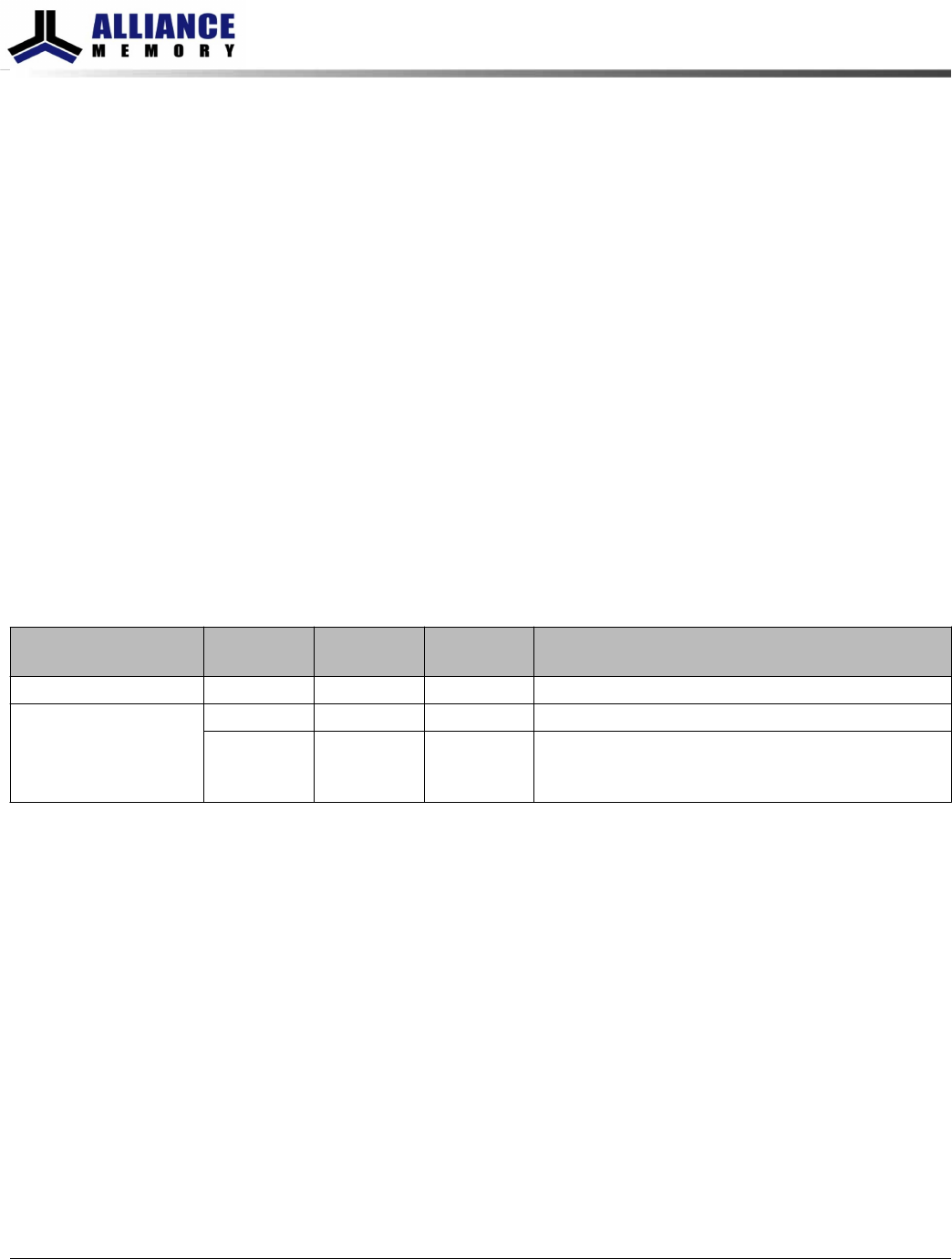Datasheet
Table Of Contents
- DDR3L SDRAM
- Description
- State Diagram
- Functional Description
- Functional Block Diagrams
- Ball Assignments and Descriptions
- Package Dimensions
- Electrical Specifications
- Thermal Characteristics
- Electrical Specifications – I DD Specifications and Conditions
- Electrical Characteristics – 1.35V IDD Specifications
- Electrical Specifications – DC and AC
- ODT Characteristics
- Output Driver Impedance
- Output Characteristics and Operating Conditions
- Speed Bin Tables
- Electrical Characteristics and AC Operating Conditions
- Electrical Characteristics and AC Operating Conditions
- Command and Address Setup, Hold, and Derating
- Data Setup, Hold, and Derating
- Commands – Truth Tables
- Commands
- Input Clock Frequency Change
- Write Leveling
- Initialization
- Voltage Initialization / Change
- Mode Registers
- Mode Register 0 (MR0)
- Mode Register 1 (MR1)
- Mode Register 2 (MR2)
- Mode Register 3 (MR3)
- MODE REGISTER SET (MRS) Command
- ZQ CALIBRATION Operation
- ACTIVATE Operation
- READ Operation
- WRITE Operation
- PRECHARGE Operation
- SELF REFRESH Operation
- Extended Temperature Usage
- Power-Down Mode
- RESET Operation
- On-Die Termination (ODT)
- Dynamic ODT
- Synchronous ODT Mode
- Asynchronous ODT Mode
- Asynchronous to Synchronous ODT Mode Transition (Power-Down Exit)

exit mode precharge power-down. A summary of the two power-down modes is listed in
Table 79 (page 178).
While in either power-down state, CKE is held LOW, RESET# is held HIGH, and a stable
clock signal must be maintained. ODT must be in a valid state but all other input signals
are “Don’t Care.” If RESET# goes LOW during power-down, the DRAM will switch out of
power-down mode and go into the reset state. After CKE is registered LOW, CKE must
remain LOW until
t
PD (MIN) has been satisfied. The maximum time allowed for power-
down duration is
t
PD (MAX) (9 ×
t
REFI).
The power-down states are synchronously exited when CKE is registered HIGH (with a
required NOP or DES command). CKE must be maintained HIGH until
t
CKE has been
satisfied. A valid, executable command may be applied after power-down exit latency,
t
XP, and
t
XPDLL have been satisfied. A summary of the power-down modes is listed be-
low.
For specific CKE-intensive operations, such as repeating a power-down-exit-to-refresh-
to-power-down-entry sequence, the number of clock cycles between power-down exit
and power-down entry may not be sufficient to keep the DLL properly updated. In addi-
tion to meeting
t
PD when the REFRESH command is used between power-down exit
and power-down entry, two other conditions must be met. First,
t
XP must be satisfied
before issuing the REFRESH command. Second,
t
XPDLL must be satisfied before the
next power-down may be entered. An example is shown in Figure 104 (page 184).
Table 79: Power-Down Modes
DRAM State MR0[12] DLL State
Power-
Down Exit
Relevant Parameters
Active (any bank open) “Don’t Care” On Fast
t
XP to any other valid command
Precharged
(all banks precharged)
1 On Fast
t
XP to any other valid command
0 Off Slow
t
XPDLL to commands that require the DLL to be
locked (READ, RDAP, or ODT on);
t
XP to any other valid command
8Gb: x4, x8, x16 DDR3L SDRAM
Power-Down Mode
178
Rev.2.0 June 2016
© 2015 Alliance Memory, Inc. All rights reserved.
Alliance Memory Inc. reserves the right to change products or specification without notice
Alliance Memory Inc. 511 Taylor Way, San Carlos, CA 94070
TEL: (650) 610-6800 FAX: (650) 620-9211










